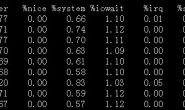shell判断文件/文件夹是否存在的示例
shell判断文件,目录是否存在或者具有权限
#!/bin/sh
myPath="/var/log/httpd/"
myFile="/var /log/httpd/access.log"
# 这里的-x 参数判断$myPath是否存在并且是否具有可执行权限
if [ ! -x “$myPath”]; then
mkdir "$myPath"
fi
# 这里的-d 参数判断$myPath是否存在
if [ ! -d “$myPath”]; then
mkdir "$myPath"
fi
# 这里的-f参数判断$myFile是否存在
if [ ! -f “$myFile” ]; then
touch "$myFile"
fi
# 其他参数还有-n,-n是判断一个变量是否是否有值
if [ ! -n “$myVar” ]; then
echo "$myVar is empty"
exit 0
fi
# 两个变量判断是否相等
if [ “$var1” = “$var2” ]; then
echo '$var1 eq $var2'
else
echo '$var1 not eq $var2'
fi
-f 和-e的区别
Conditional Logic on Files
-a file exists.
-b file exists and is a block special file.
-c file exists and is a character special file.
-d file exists and is a directory.
-e file exists (just the same as -a).
-f file exists and is a regular file.
-g file exists and has its setgid(2) bit set.
-G file exists and has the same group ID as this process.
-k file exists and has its sticky bit set.
-L file exists and is a symbolic link.
-n string length is not zero.
-o Named option is set on.
-O file exists and is owned by the user ID of this process.
-p file exists and is a first in, first out (FIFO) special file or
named pipe.
-r file exists and is readable by the current process.
-s file exists and has a size greater than zero.
-S file exists and is a socket.
-t file descriptor number fildes is open and associated with a
terminal device.
-u file exists and has its setuid(2) bit set.
-w file exists and is writable by the current process.
-x file exists and is executable by the current process.
-z string length is zero.
是用 -s 还是用 -f 这个区别是很大的!
如需转载请注明: 转载自26点的博客
本文链接地址: shell判断文件/文件夹是否存在的示例
转载请注明:26点的博客 » shell判断文件/文件夹是否存在的示例



